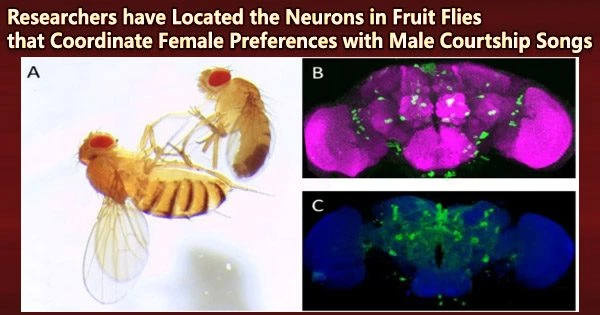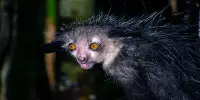Fruit flies, also known as Drosophila melanogaster, have a nervous system that is composed of approximately 100,000 neurons. Despite their small size, fruit flies have a complex nervous system that allows them to perform a range of behaviors, including walking, flying, mating, and finding food.
It is crucial to make sure that one is communicating with a member of the same species when it comes to wooing. Animals use a variety of sensory systems, with audio communication playing a significant role in their decision-making, to determine whether potential mates are in fact acceptable.
Although the behavioral aspects of these distinctions have previously been documented, it is unknown how the neural circuitry that underlies this decision-making has changed between species.
Now, in a new publication in Scientific Reports, a research group at Nagoya University in Japan has investigated how the auditory processing pathway has evolved and diverged between fruit fly species.
Males of several species of Drosophila (fruit flies), which are regularly used in neuroscience research, vibrate their wings rhythmically during courtship, producing a courtship song. Female flies can identify between possible mates because the temporal elements of these songs vary between species.
“Identifying complex features, such as rhythm, requires information processing that involves not only the auditory organs but also neural circuits,” explains Yuki Ishikawa, the lecturer leading the project. “However, interspecies comparisons of the mechanism of rhythm discrimination have not been studied before because they require a more precise approach than just studying peripheral auditory organs.”
It is one of the most advanced animals for brain research because of the wealth of existing genetic tools. By introducing these tools into Drosophila simulans, this study was the first to make detailed interspecies comparisons of auditory neural circuits. By transferring these methods and results to closely related species, we can begin to study how information processing has evolved in the animal brain. We hope that the method established in this study will contribute to understanding the full picture of how mechanisms in the auditory brain have evolved.
Yuki Ishikawa
To find out what happens in the neural circuits during courtship, Professor Azusa Kamikouchi, Lecturer Yuki Ishikawa, and Graduate Student Takuro Ohashi of the Graduate School of Science first played songs with different rhythms to females of two closely related species of fruit flies (Drosophilia melanogaster and Drosophilia simulans), which have different courtship songs, to see which tones the females found acceptable.
Researchers discovered that Drosophilia simulans females favored songs with differing temporal components to those of Drosophilia melanogaster, which supports earlier findings.
Based on these behavioral findings, the researchers then employed calcium imaging to ascertain how the AMMC-B1 subpopulation of auditory neurons reacted to various species’ courtship songs. They found that the responses of these neurons did indeed differ between species, and that these differences were consistent with previously observed behavioral responses.
“This is the first study to clarify how the evolution of the mechanism for distinguishing between rhythms of the same sound occurs,” explains Dr. Ishikawa. “Rhythmic information processing in neural circuits differs between fruit fly species. Using mathematical modeling, we have shown that this species difference may be due to a change in the balance between facilitation and inhibition in neural circuits.”
The team discovered that despite the behavioral variations between the two species, AMMC-B1 neurons in both share many of the same general properties. This shows that the characteristics of the brain circuit, at least in its infancy, are preserved throughout evolution.
Thus, even in different species, they appear to be encoded by similar genes. These results are consistent with the hypothesis that the species-specificity of such neuronal cell groups emerged later in the evolution of the neural circuits that process auditory information.
“Drosophila melanogaster has neural mechanisms that are widely shared among animals,” Ishikawa said.
“It is one of the most advanced animals for brain research because of the wealth of existing genetic tools. By introducing these tools into Drosophila simulans, this study was the first to make detailed interspecies comparisons of auditory neural circuits. By transferring these methods and results to closely related species, we can begin to study how information processing has evolved in the animal brain. We hope that the method established in this study will contribute to understanding the full picture of how mechanisms in the auditory brain have evolved.”
















